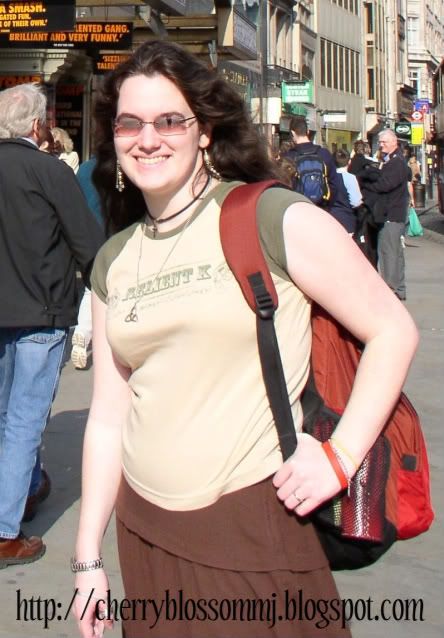
In the valley of Fruitless mountain, a young girl named Minli lives in a ramshackle hut with her parents. In the evenings, her father regales her with old folktales of the Jade Dragon and the Old Man on the Moon, who knows the answers to all of life's questions. Inspired by these stories, Minli sets off on an extraordinary journey to find the Old Man on the Moon to ask him how she can change her family's fortune. She encounters an assorted cast of characters and magical creatures along the way, including a dragon who accompanies her on her quest for the ultimate answer.
Grace Lin, author of the beloved Year of the Dog and Year of the Rat, returns with a wondrous story of adventure, faith, and friendship. A fantasy crossed with Chinese folklore, Where the Mountain Meets the Moon is a timeless story reminiscent of The Wizard of Oz. Her beautiful illustrations, printed in full-color, accompany the text throughout. Once again, she has created a charming, engaging book for young readers.
A creative book from the cover and fabulous images to the details of the story and the imagination that all combined they provoke is a definite way of describing the latest book from Grace Lin. The characters through out all show a sense of strength and courage in their own way. I find that this book is a fabulous shelf keeper and one to share with young family and friends and gladly read aloud and provoke discussion of bravery and more.
trailer end
Q&A
1. It has been suggested that this is a great book to read aloud with your child. What is your opinion of this as an author? Was the book written for a child to read alone? To be shared between parent or child? What was your purpose audience?
I began my children’s book career with picture books, so striving for the read-aloud quality has been something that has been ingrained in me. As I write, I almost always read it out loud to make sure it is clear orally and make changes accordingly. But I think “Where the Mountain Meets the Moon” can be enjoyed either way, read aloud or alone.
I wanted the book to be appropriate for young children who are able to read at a higher level but may not be ready for the subject matter of older books; and I also wanted the book to be enjoyable for adults and older children. I wanted it to be a book that the whole family could share; where no one would be embarrassed or confused, but everyone would still take great pleasure in. So, “Where the Mountain Meets the Moon” is a book with meanings that can be understood at many different levels as well as a fun adventure story. Or, at least that is what I meant it to be!
2. In the case of readers who enjoy listening to background music while reading, do you have any suggestions to accompany Where the Mountain Meets the Moon?
Honestly, I am not very good with music—I am one of those people that read/work in absolute silence or the same soundtrack over and over again. But I did a little call out of recommendations for music for my online book launch (which will be at www.wherethemountainmeetsthemoon.com on July 1st) and this is what I came up with:
Longing by Tan Dun
Night Flight by Tan Dun
Silk Road Theme by Kitaro
Forbidden Colors by Ryuichi Sakamoto
The Last Emperor by John Williams
Mido Mountain by Yo Yo Ma (try the whole Silk Road Journeys album by Yo Yo Ma)
Desert Capriccio by Yo Yo Ma
3. Where did your idea for Minli come from?
In late 2003, I did a cover illustration for Cricket Magazine of an Asian girl riding a flying red dragon. As I painted the image, the girl captivated me. I had painted her in traditional clothing, over an idealized Asian landscape. I imagined her full of delight on her ride in the sky, full of adventure and life. And she slowly became Minli (though in the Cricket cover she is older), which is why I decided (somewhat hesitantly) to disregard certain Chinese customs (such as foot binding) in my book and always emphasize that my book is an Asian-inspired fantasy. I wanted the main character to be the girl I had painted, full of spirit and independence with the ability to be able to go on a journey. That image I painted for Cricket was to transform into my website logo and then into the cover of “Where the Mountain Meets the Moon.”
Find Grace Lin on her Facebook Fan page.
And here is a peak at the first chapter...
Far away from here, following the Jade River, there was
once a black mountain that cut into the sky like a jagged
piece of rough metal. The villagers called it Fruitless
Mountain because nothing grew on it and birds and animals
did not rest there.
Crowded in the corner of where Fruitless Mountain
and the Jade River met was a village that was a shade of
faded brown. This was because the land around the
village was hard and poor. To coax rice out of the stubborn
land, the fi elds had to be fl ooded with water. The
villagers had to tramp in the mud, bending and stooping
and planting day after day. Working in the mud so much
made it spread every where and the hot sun dried it onto
their clothes and hair and homes. Over time, every thing
in the village had become the dull color of dried mud.
One of the houses in this village was so small that its
wood boards, held together by the roof, made one think
of a bunch of matches tied with a piece of twine. Inside,
there was barely enough room for three people to sit
around the table — which was lucky because only three
people lived there. One of them was a young girl called
Minli.
Minli was not brown and dull like the rest of the village.
She had glossy black hair with pink cheeks, shining
eyes always eager for adventure, and a fast smile that
fl ashed from her face. When people saw her lively and
impulsive spirit, they thought her name, which meant
quick thinking, suited her well. “Too well,” her mother
sighed, as Minli had a habit of quick acting as well.
Ma sighed a great deal, an impatient noise usually accompanied
with a frown at their rough clothes, rundown
house, or meager food. Minli could not remember a time
when Ma did not sigh; it often made Minli wish she had
been called a name that meant gold or fortune instead. Because
Minli and her parents, like the village and the land
around them, were very poor. They were barely able to
harvest enough rice to feed themselves, and the only
money in the house was two old copper coins that sat in a
blue rice bowl with a white rabbit painted on it. The coins
and the bowl belonged to Minli; they had been given to
her when she was a baby, and she had had them for as
long as she could remember.
What kept Minli from becoming dull and brown like
the rest of the village were the stories her father told her
every night at dinner. She glowed with such wonder and
excitement that even Ma would smile, though she would
shake her head at the same time. Ba seemed to drop his
gray and work weariness — his black eyes sparkled like
raindrops in the sun when he began a story.
“Ba, tell me the story about Fruitless Mountain again,”
Minli would say as her mother spooned their plain rice
into bowls. “Tell me again why nothing grows on it.”
“Ah,” Minli’s father said, “you’ve heard this so many
times. You know.”
“Tell me again, Ba,” Minli begged. “Please.”
“Okay,” he said, and as he set down his chopsticks his
smile twinkled in a way that Minli loved.
THE STORY OF
FRUITLESS MOUNTAIN
Once when there were no rivers on the earth,
the Jade Dragon was in charge of clouds.
She decided when and where the clouds
would rain upon the land and when they would stop.
She was very proud of her power and of the reverence
the people of earth paid her. Jade Dragon had four
dragon children: Pearl, Yellow, Long, and Black. They
were large and strong and good and kind. They helped
Jade Dragon with her work and whenever they fl ew
in the sky she was overwhelmed with love and pride.
However, one day, as Jade Dragon ended the rain
and moved the clouds away from the land, she overheard
some villagers’ conversation.
“Ah, thank goodness the rain is gone,” one man said.
“Yes,” another said, “I’m so tired of the rain. I’m glad
the clouds are gone and the sun is fi nally shining.”
Those words fi lled Jade Dragon with anger. Tired of
rain! Glad the clouds were gone! Jade Dragon was indignant.
How dare the villagers dishonor her that way!
Jade Dragon was so offended that she decided that she
would never let it rain again. “The people can enjoy the
sun forever,” Jade Dragon thought resentfully.
Of course, that meant despair for the people on
earth. As the sun beat overhead and the rain never
came, drought and famine spread over the land. Animals
and trees withered and died and the people
begged for rain, but Jade Dragon ignored them.
But their suffering did not go unnoticed by Jade
Dragon’s children. They were horrifi ed at the anguish
and misery on earth. One by one, they went to their
mother and pleaded forgiveness for the humans —
but even their words did not soften their mother’s
cold heart. “We will never make it rain for the people
again,” Jade Dragon vowed.
Pearl, Yellow, Long, and Black met in secret.
“We must do something to help the people,” Black
said, “If they do not get water soon, they will all die.”
“Yes,” Yellow said, “but what can we do? We cannot
make it rain. We cannot dishonor Mother with
disobedience.”
Long looked down at the earth. “I will sacrifi ce myself
for the people of earth,” he said. “I will lie on the
land and transform myself into water for them to
drink.”
The others looked at him in astonishment, but one
by one they nodded.
“I will do the same,” Yellow said.
“As will we,” Pearl and Black said.
So Jade Dragon’s children went down to earth and
turned themselves into water, saving the people on
the earth. They became the four great rivers of land,
stopping the drought and death of all those on earth.
But when Jade Dragon saw what her children had
done, she cursed herself for her pride. No longer would
her dragon children fl y in the air with her or call her
Mother. Her heart broke in grief and sadness; she fell
from the sky and turned herself into the Jade River
in hopes that she could somehow be reunited with her
children.
Fruitless Mountain is the broken heart of Jade
Dragon. Nothing grows or lives on the mountain; the
land around it is hard and the water of the river is
dark because Jade Dragon’s sad spirit is still there.
Until Jade Dragon is no longer lonely and reunited
with at least one of her children, Fruitless Mountain
will remain bare.
“Why doesn’t someone bring the water of the four great
rivers to the mountain?” Minli asked, even though she
had asked this question many times before. Every time Ba
told the story, she couldn’t help think how wonderful it
would be to have the mountain blooming with fruit and
fl owers, bringing richness to their needy village. “Wouldn’t
that make Jade Dragon happy?”
“When Jade Dragon’s children turned themselves into
water,” Minli’s father said, “they were at peace and their
spirits were released. Their spirits are no longer in the
water. So Jade Dragon cannot fi nd them in the rivers.
Over a hundred years ago, a man tried to reunite them by
taking stones from the mountain to the rivers.”
“That man was not taking the stone for a dragon spirit,”
Minli’s mother cut in. She never quite approved of Ba’s
stories as she felt they made Minli impractical and caused
her to daydream. “My grandmother told me he was an
artist. He took the mountain rock to carve into inking
stones.”
“Did he ever come back?” Minli asked.
“No. It probably did not make good ink,” Ma sighed. “He
probably found something fi ner elsewhere. I bet the bronze
on his horse’s saddle was more than we will ever have.”
Ma’s sighs made Minli wish that every rock of Fruitless
Mountain was gold and she couldn’t help asking, “So how
will Fruitless Mountain ever grow green again?”
“Ah,” her father said, “that is a question you will have
to ask the Old Man of the Moon.”
“Oh, tell that story next!” Minli begged. “Whenever I
ask something important, people say, ‘That is a question
you have to ask the Old Man of the Moon.’ Someday, I
will ask him.”
“The Old Man of the Moon! Another story! Our house
is bare and our rice hardly fi lls our bowls, but we have
plenty of stories.” Ma sighed again. “What a poor fortune
we have!”
“Maybe,” Ba said to Minli, glancing at Ma, “I should
tell you that story tomorrow.”
- Reading level: Ages 9-12
- Hardcover: 288 pages
- Publisher: Little, Brown Young Readers (July 1, 2009)
- Language: English
- ISBN-10: 0316114278
- ISBN-13: 978-0316114271
- Product Dimensions: 7.6 x 5.3 x 1.1 inches


















1 comments and creative thoughts:
Thanks so much for this lovely post and hosting me!
Post a Comment